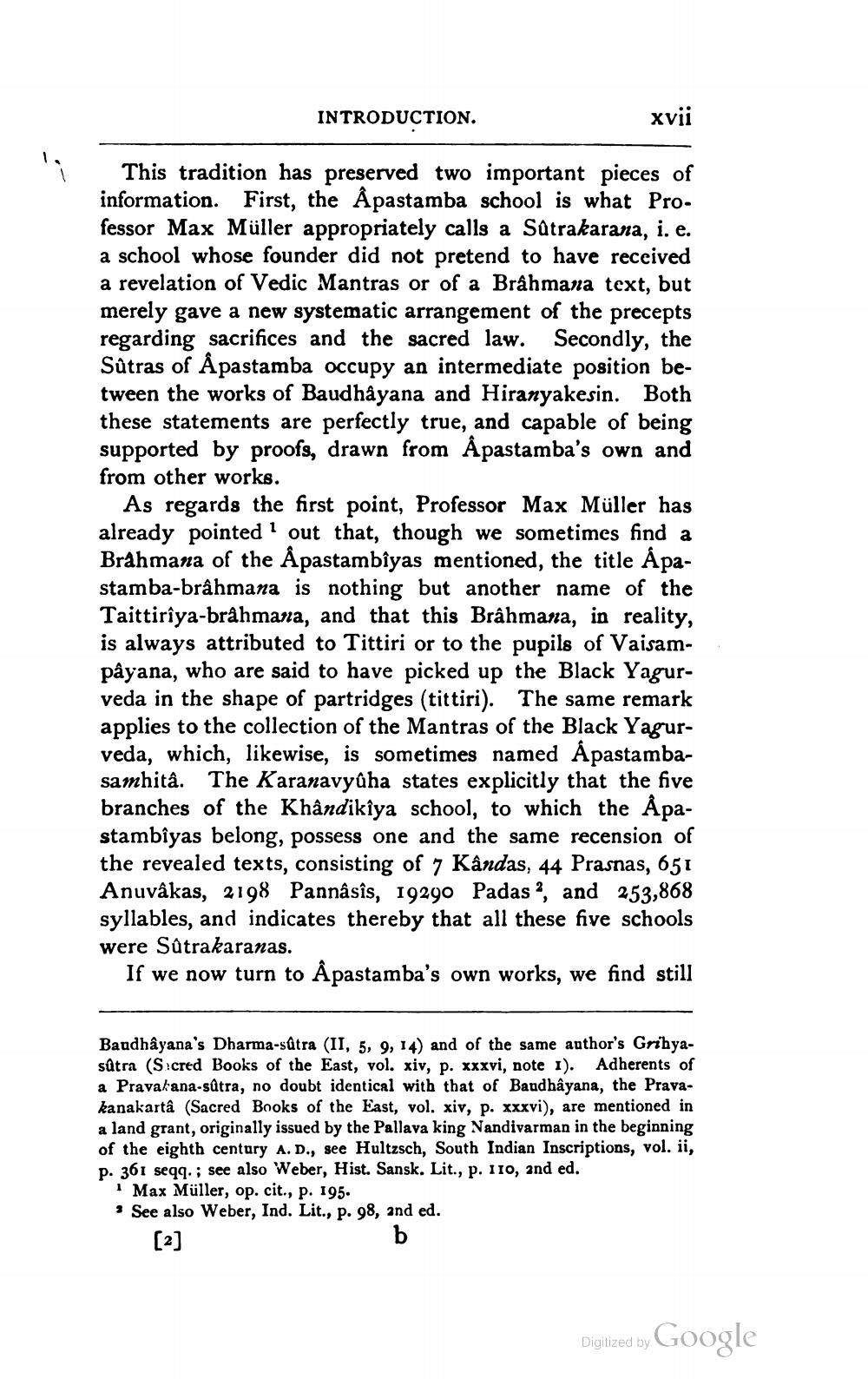________________
INTRODUCTION.
xvii
This tradition has preserved two important pieces of information. First, the Âpastamba school is what Professor Max Müller appropriately calls a Sûtrakarana, i. e. a school whose founder did not pretend to have received a revelation of Vedic Mantras or of a Brâhmana text, but merely gave a new systematic arrangement of the precepts regarding sacrifices and the sacred law. Secondly, the Sûtras of Apastamba occupy an intermediate position between the works of Baudhâyana and Hiranyakesin. Both these statements are perfectly true, and capable of being supported by proofs, drawn from Âpastamba's own and
from other works.
As regards the first point, Professor Max Müller has already pointed out that, though we sometimes find a Brahmana of the Âpastambîyas mentioned, the title Âpastamba-brâhmana is nothing but another name of the Taittirîya-brâhmana, and that this Brâhmana, in reality, is always attributed to Tittiri or to the pupils of Vaisampâyana, who are said to have picked up the Black Yagurveda in the shape of partridges (tittiri). The same remark applies to the collection of the Mantras of the Black Yagurveda, which, likewise, is sometimes named Âpastambasamhitâ. The Karanavyûha states explicitly that the five branches of the Khândikîya school, to which the Apastambîyas belong, possess one and the same recension of the revealed texts, consisting of 7 Kândas, 44 Prasnas, 651 Anuvâkas, 2198 Pannâsîs, 19290 Padas 2, and 253,868 syllables, and indicates thereby that all these five schools were Sûtrakaranas.
If we now turn to Âpastamba's own works, we find still
Baudhâyana's Dharma-sûtra (II, 5, 9, 14) and of the same author's Grihyasûtra (Sacred Books of the East, vol. xiv, p. xxxvi, note 1). Adherents of a Pravakana-sûtra, no doubt identical with that of Baudhâyana, the Pravakanakartâ (Sacred Books of the East, vol. xiv, p. xxxvi), are mentioned in a land grant, originally issued by the Pallava king Nandivarman in the beginning of the eighth century A. D., see Hultzsch, South Indian Inscriptions, vol. ii, p. 361 seqq.; see also Weber, Hist. Sansk. Lit., p. 110, 2nd ed.
1 Max Müller, op. cit., p. 195.
See also Weber, Ind. Lit., p. 98, 2nd ed.
[2]
b
Google
Digitized by




